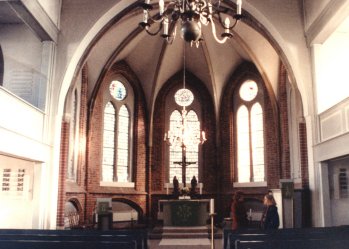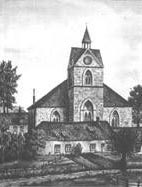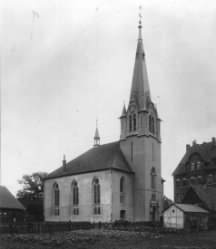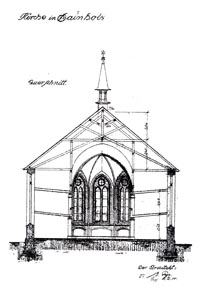| |
|
|
|
|
| |
back to Marienkirche main |
 |
| Marienkirche |
According to archeological findings, the Area around Hainholz – today a district of Hanover city – was inhabited already in an early age. It is said that it must have been the location of a pagan sacred grove, as the name suggests. (“Hain” = grove, “Holz” = wood) After all, the ancient Germans worshipped their gods in groves.
Around 800 AD, the christian religion spread to the region and supposedly around that time the sacred spot was converted to a christian place of worship.
A first chapel with a stone statue of Virgin Mary must have existed around 1394, as evidenced by old documents from that year.
 |
|

The first St. Mary’s church, the body of which remains until today as the choir section, was built from 1409 to 1424 as a catholic church. Based on its location it was often referred to “Maria im Sumpfe” (= St. Mary’s in the marsh). Starting in 1492, this church became a location for catholic service for inhabitants from the surrounding villages of Hainholz, Vahrenwald, Herrenhausen and List.
In due time the church also became a destination for pilgrimages as it was home to a wooden statue of Mary that had special miraculous powers.
As the reformation spread to Hanover, the usage of the church switched from catholic to protestant around 1543. As more space was needed for the protestant services, the pilgrimage church was extended with a nave and a tower. According to some sources, these first nave and tower were constructed of wood.
The statue of Virgin Mary to which the church owed its reputation as a pilgrimage church was bought back for the catholic church by an Aristocrat. The statue was moved first to Hanover and later to Hildesheim, where it was unfortunately destroyed during a blaze in another church.

|
| a section drawing of the nave and choir. (one of the materials provided to me by the local church administration) |
|
|
|
The original nave had fallen into a state of disrepair by 1825 and was razed. A new nave and tower were constructed under master builder Ludwig Hellner, finished in 1828.
Already in 1895, the church was re-built once again, and the nave and tower as they still look today were constructed: A sharp-angled tower roof with corner towers and and a large tower clock inside.
During the age of industrialization, Hainholz lost its village character until becoming a district of Hannover.
In World War Two, the roof of the church’s nave and choir were destroyed during a bombing raid and were only rebuild many years after the war.
Today the church has retained most of its appearance of the last major rebuild in 1895 with the exception of newly-rendered walls. The new colour of the walls as they are today has earned the church the nickname “Schweinchenkirche” (= Piggy Church) among the inhabitants of Hainholz.
 |
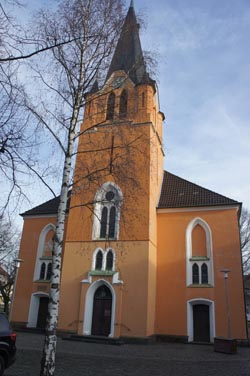 |
|
The west facade of the church in 2014 |
|
| |
tower height: 37.8m
Constructed: 1424/1800 |
| |
| return to top |
|
|
|

